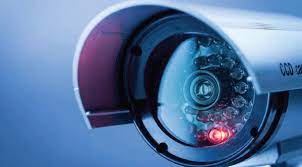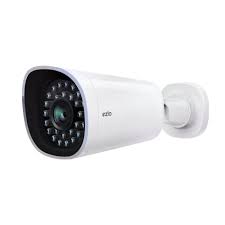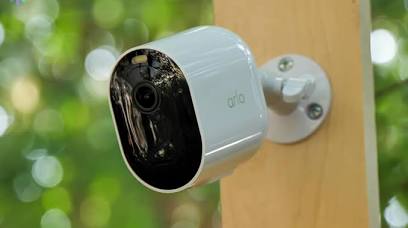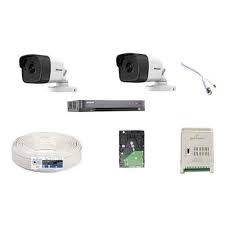Closed Circuit Television (CCTV): Enhancing Security and Peace of Mind
In today’s rapidly evolving world, security is a top priority for individuals, businesses, and communities alike. One technology that has become increasingly popular in addressing this need is Closed Circuit Television, commonly known as CCTV. CCTV systems have revolutionized the way we monitor and safeguard our surroundings, providing enhanced security and peace of mind.
So, what exactly is CCTV? Simply put, it is a surveillance system that utilizes video cameras to capture and transmit footage to a limited set of monitors or recording devices. Unlike traditional television broadcasts, CCTV operates on a closed circuit, meaning that the video feeds are not publicly accessible but rather confined to specific locations or authorized personnel.
The benefits of implementing a CCTV system are numerous. First and foremost, it acts as a powerful deterrent against criminal activities. The presence of visible cameras alone can discourage potential wrongdoers from engaging in unlawful behavior. Knowing that their actions are being recorded significantly reduces the likelihood of thefts, burglaries, or vandalism.
Moreover, in the unfortunate event of an incident occurring within the monitored area, CCTV provides valuable evidence for investigations. The recorded footage can be reviewed by law enforcement agencies or used in court proceedings to identify perpetrators and establish facts. This not only aids in resolving crimes but also serves as a preventive measure against future incidents.
CCTV systems offer flexibility in terms of their application. They can be installed in various settings such as residential complexes, commercial establishments, public spaces, educational institutions, and even on roads for traffic monitoring purposes. With advancements in technology, modern CCTV systems now offer features like high-definition video quality, night vision capabilities, remote access via mobile devices or computers, motion detection alerts, and even facial recognition software.
The ability to remotely access CCTV feeds has further enhanced convenience and accessibility for users. Whether you are away from your premises or simply want to keep an eye on your surroundings, you can now view live or recorded footage from anywhere with an internet connection. This feature is particularly beneficial for businesses with multiple locations or homeowners wanting to monitor their property while on vacation.
It is important to note that the use of CCTV systems must be done responsibly and in compliance with privacy laws and regulations. Clear signage should be displayed to inform individuals that they are being monitored, ensuring transparency and respecting privacy rights.
In conclusion, Closed Circuit Television (CCTV) has become an indispensable tool in modern security measures. Its ability to deter criminal activities, provide evidence for investigations, and offer remote access has made it a popular choice for individuals and businesses seeking enhanced safety. By leveraging the power of technology, CCTV systems contribute significantly to creating secure environments and instilling peace of mind in our daily lives.
5 Essential Tips for Closed Circuit TV (CCTV) Safety and Security
- Ensure that the CCTV system is installed by a qualified professional to ensure it meets safety and security standards.
- Regularly check the footage of your CCTV cameras to make sure they are working correctly and recording any suspicious activity.
- Keep your CCTV system up-to-date with the latest software and hardware updates available from the manufacturer.
- Make sure you have an adequate backup system in place for storing recorded footage in case of an emergency or power failure.
- Ensure that all staff members are aware of their responsibilities when using or viewing CCTV footage, such as not sharing images or recordings with unauthorized personnel or posting them online without permission.
Ensure that the CCTV system is installed by a qualified professional to ensure it meets safety and security standards.
Ensuring Safety and Security: Professional Installation of CCTV Systems
When it comes to the installation of Closed Circuit Television (CCTV) systems, one crucial aspect that should never be overlooked is the expertise of the installer. To maximize the effectiveness and reliability of your CCTV system, it is imperative to have it installed by a qualified professional who can ensure that safety and security standards are met.
A professional installer possesses the knowledge and experience necessary to design and set up a CCTV system tailored to your specific needs. They understand the intricacies involved in positioning cameras strategically, taking into account factors such as lighting conditions, blind spots, and optimal coverage areas. By doing so, they can help eliminate potential vulnerabilities and provide comprehensive surveillance coverage.
Moreover, a qualified professional will ensure that the wiring and connections are installed correctly, minimizing any chances of malfunctions or signal disruptions. They will also take into consideration factors such as power supply requirements and data storage solutions to ensure seamless operation of the system.
By entrusting the installation process to a professional, you can have peace of mind knowing that your CCTV system meets industry standards for safety and security. Professionals stay updated with the latest regulations and best practices in the field, ensuring compliance with legal requirements regarding privacy protection and data handling.
Additionally, professional installers can offer valuable guidance on selecting high-quality equipment from reputable manufacturers. They have access to a wide range of CCTV products with varying features and capabilities, allowing them to recommend options that best suit your specific security needs.
Investing in professional installation not only guarantees proper setup but also saves you time and effort. Installing a CCTV system involves complex technical tasks that require specialized tools and expertise. By relying on professionals, you can avoid potential errors or complications that may arise from attempting a DIY installation.
Lastly, professional installers often provide ongoing support services such as maintenance, troubleshooting, and upgrades. This ensures that your CCTV system remains in optimal condition over time, providing reliable surveillance for the long term.
In conclusion, when it comes to securing your premises with a CCTV system, it is crucial to prioritize professional installation. By doing so, you can rest assured that your system is set up correctly, adheres to safety and security standards, and operates efficiently. With the expertise of a qualified professional, you can enhance the effectiveness of your CCTV system in safeguarding your property and maintaining a secure environment.
Regularly check the footage of your CCTV cameras to make sure they are working correctly and recording any suspicious activity.
Regularly Check Your CCTV Footage for Optimal Security
When it comes to ensuring the effectiveness of your Closed Circuit Television (CCTV) system, one crucial tip stands out: regularly checking the footage of your CCTV cameras. By doing so, you can ensure that your cameras are working correctly and recording any suspicious activity that may occur within their range.
The primary purpose of installing CCTV cameras is to enhance security and provide peace of mind. However, simply having the cameras in place is not enough. It is essential to actively monitor and review the footage to maximize the system’s effectiveness.
Regularly checking your CCTV footage serves multiple purposes. Firstly, it allows you to verify that all cameras are functioning correctly. Technical issues such as camera malfunctions or connectivity problems can arise over time. By routinely reviewing the footage, you can identify any potential issues and address them promptly, ensuring uninterrupted surveillance coverage.
Secondly, reviewing CCTV footage helps you identify any suspicious or unusual activities within your premises or monitored areas. It enables you to stay vigilant and take immediate action if necessary. By being proactive in monitoring the recorded footage, you can detect potential security breaches or incidents early on, preventing further escalation or damage.
Moreover, regularly checking your CCTV footage provides an opportunity for ongoing evaluation and improvement of your security measures. You can assess whether camera placements are optimal or if additional cameras are required to cover blind spots. This process allows you to fine-tune your surveillance system for better coverage and enhanced security.
To make the most of this tip, establish a regular schedule for reviewing CCTV footage based on your specific needs and circumstances. It could be daily, weekly, or even multiple times a day depending on the level of activity in the monitored areas. Assign responsible individuals who will diligently carry out this task and ensure that they have access to relevant equipment and software for seamless review.
In conclusion, regularly checking the footage of your CCTV cameras is a vital step in maintaining optimal security. It helps ensure the proper functioning of your cameras, enables the timely detection of suspicious activities, and allows for ongoing evaluation and improvement of your surveillance system. By actively monitoring your CCTV footage, you can enhance the effectiveness of your security measures and maintain a safe environment for yourself, your property, and those around you.
Keep your CCTV system up-to-date with the latest software and hardware updates available from the manufacturer.
Keeping Your CCTV System Up-to-Date: Ensuring Optimal Performance and Security
When it comes to the effectiveness of your Closed Circuit Television (CCTV) system, staying up-to-date with the latest software and hardware updates is crucial. Regularly updating your CCTV system with the manufacturer’s latest releases ensures optimal performance, enhanced functionality, and improved security.
Manufacturers continually work on refining their CCTV systems by introducing new features, fixing bugs, and addressing vulnerabilities. By keeping your system updated, you benefit from these advancements, ensuring that your CCTV system remains reliable and efficient.
One of the primary reasons to update your CCTV system is to enhance its performance. Software updates often include optimizations that improve video quality, enhance camera controls, and streamline user interfaces. These updates can result in sharper images, smoother video playback, and a more user-friendly experience. By regularly updating your CCTV system’s software, you can take advantage of these improvements and ensure that you are getting the most out of your surveillance solution.
Security is another critical aspect that necessitates keeping your CCTV system up-to-date. Manufacturers frequently release security patches to address vulnerabilities or potential exploits discovered in their systems. These patches help safeguard against unauthorized access or hacking attempts that could compromise the integrity of your surveillance footage or even grant unauthorized access to your network. By promptly installing these updates, you fortify the security of your CCTV system and protect against potential threats.
Hardware updates are also essential for maintaining an efficient CCTV system. Manufacturers may release firmware updates for cameras or other peripheral devices that improve performance, fix compatibility issues with newer equipment or software versions, or add new functionalities. By keeping all components of your CCTV system up-to-date, you ensure seamless integration between devices and maximize their overall performance.
To keep your CCTV system up-to-date with ease, it is advisable to register for notifications from the manufacturer regarding software releases and updates. This way, you will be promptly informed about any new updates available for your system. Additionally, manufacturers often provide detailed instructions or support to guide you through the update process, making it a hassle-free experience.
In conclusion, keeping your CCTV system up-to-date with the latest software and hardware updates from the manufacturer is vital. By doing so, you ensure optimal performance, benefit from new features and improvements, and strengthen the security of your surveillance solution. Regularly checking for updates and promptly installing them will help you maintain a reliable and efficient CCTV system that provides peace of mind and effective monitoring capabilities.
Make sure you have an adequate backup system in place for storing recorded footage in case of an emergency or power failure.
Make Sure You Have an Adequate Backup System for Your CCTV Recorded Footage
When it comes to the security of your premises, having a Closed Circuit Television (CCTV) system in place is a wise decision. However, it is equally important to consider the safety of the recorded footage captured by your CCTV cameras. In case of an emergency or power failure, having an adequate backup system for storing this footage becomes crucial.
Imagine a scenario where an incident occurs on your property, and you rely on the recorded footage from your CCTV system to gather evidence or identify those involved. Now, picture a power outage or technical glitch that causes your CCTV system to go offline. Without a proper backup system, you risk losing all the valuable footage that could have been vital in resolving the situation.
To avoid such situations and ensure the integrity of your recorded footage, it is essential to have a reliable backup solution in place. Here are some key considerations:
- External Hard Drives or Network Attached Storage (NAS): Invest in external hard drives or NAS devices specifically designed for video surveillance purposes. These devices offer ample storage space and can be connected directly to your CCTV system for automatic backups.
- Cloud Storage: Explore cloud-based storage solutions offered by reputable service providers. Cloud storage allows you to securely store your recorded footage off-site, eliminating the risk of physical damage or loss due to emergencies within your premises.
- Redundant Recording Systems: Consider implementing redundant recording systems within your CCTV setup. This involves using multiple recording devices simultaneously so that if one fails, the other continues capturing and storing footage seamlessly.
- Uninterruptible Power Supply (UPS): Install UPS units to provide backup power during electrical outages or fluctuations. A UPS ensures uninterrupted operation of your CCTV system and prevents any gaps in recording due to sudden power failures.
- Regular Data Backups: Establish a routine schedule for backing up your recorded footage onto external devices or cloud storage. This practice ensures that even if an emergency occurs, you will have access to the most recent and relevant footage.
Remember, emergencies or power failures can happen unexpectedly, and being prepared with a robust backup system can make all the difference in maintaining the security of your premises. Consult with a professional CCTV installer or system provider to determine the most suitable backup solution for your specific needs.
By prioritizing the implementation of an adequate backup system for storing recorded footage, you can have peace of mind knowing that your CCTV system remains reliable and effective in protecting your property and ensuring the safety of those within it.
Ensure that all staff members are aware of their responsibilities when using or viewing CCTV footage, such as not sharing images or recordings with unauthorized personnel or posting them online without permission.
Using Closed Circuit Television (CCTV) systems can greatly enhance security and surveillance in various settings. However, it is crucial to ensure that all staff members who have access to CCTV footage are fully aware of their responsibilities and obligations regarding its usage.
One important tip is to educate and train staff members on the proper handling of CCTV footage. They should understand the importance of maintaining confidentiality and respecting privacy rights. It is essential to emphasize that sharing images or recordings with unauthorized personnel or posting them online without permission can have serious consequences, both legally and ethically.
Staff members should be made aware that CCTV footage is sensitive information that should only be accessed and used for legitimate purposes. Unauthorized sharing or distribution of this footage can compromise the privacy of individuals captured on camera and may even violate data protection laws.
To ensure compliance, it is advisable to establish clear guidelines and protocols for staff members when using or viewing CCTV footage. These guidelines should outline the responsibilities associated with accessing, storing, and sharing such information. Regular reminders and refresher training sessions can help reinforce these guidelines and keep them fresh in employees’ minds.
Furthermore, it is essential to restrict access to CCTV systems only to authorized personnel who require it for their specific roles. This helps minimize the risk of unauthorized use or abuse of the system. Access controls, such as unique login credentials or restricted physical access to monitoring rooms, can help maintain accountability.
By ensuring that all staff members are aware of their responsibilities when using or viewing CCTV footage, organizations can maintain a high level of professionalism, integrity, and adherence to legal requirements. This proactive approach not only protects individuals’ privacy but also safeguards the reputation of businesses or institutions utilizing CCTV systems.
Remember, responsible usage of CCTV footage not only strengthens security measures but also demonstrates a commitment to ethical practices within an organization.




